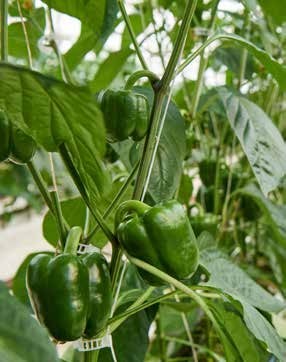roadtest
Turning up the HEAT
When LPG costs started to affect production, Zeke Zalsman of Zaldeesh Farms knew something had to give. His solution has upped production and quality, and lessened costs by 25 per cent.

Zeke Zalsman of Zaldeesh Farms.
As told to Anna Flanders Photography Frances Andrijich
vWA You reviewed how you were heating your greenhouses – why?
ZEKE We’ve been researching different ways of heating our greenhouses for quite a while. We had been circulating water through pipes heated by LPG to keep optimum temperatures during the night and winter. However, LPG got so expensive we started trading off between cost and benefit. We were switching off heating more than we would have liked. This meant we lost production, experienced more disease and it sort of snowballed. We wanted to have an option where we didn’t have to compromise.
vWA Why did you settle on heat pumps as a solution?
ZEKE We couldn’t find anyone who had installed them in greenhouses and the suppliers we spoke to didn’t know of anyone. However, heat pumps have been used for swimming pools. So, the concept fit, even though it hadn’t been applied.
vWA The heat pump concept became a feasibility study with funding through the VegNET Innovation Fund with two other greenhouse growers – how did that come about?
“ It’s worked well for us. It’s done a better job than LPG. On average, we have 1.5 degrees higher than what the LPG could achieve ”
ZEKE I introduced the heat pump idea to Michael (Bartholomew, former RDO at vegetablesWA) because a grant had come up. I called him to ask if it applied to the heat pumps and he said ‘not specifically’. However, he got interested in the project and wanted to run with it.
vWA How did it begin?
ZEKE We used our existing set-up, and had an engineer make sure our flows and set-up were correct, then worked with a plumber. We wanted to replicate what the gas did, but with a cheaper, more efficient, method.
vWA So how has it worked?
ZEKE It’s worked well for us. It’s done a better job than LPG. On average, we have 1.5 degrees higher than what the LPG could achieve. Before we would switch off the heat for a few weeks before the crop finished due to cost. Now we can increase our heating and have heat during cold winter days. It’s definitely helped the quality. We have a lot better quality and less disease. Production is hard to measure specifically because it’s only one year on since transferring all our greenhouses from LPG to heat pumps, and there are other factors involved. However, we have had higher production and better quality in every house this year compared to last year. We are now giving the plants a better climate and more optimal temperatures. So, you would expect production and quality to increase.
vWA What were the costs?
ZEKE The first house we did (3500sqm) was $70,000 due to extra costs, such as an engineer and figuring out the system. Now we’ve got the cost down a bit. We did a 5500sqm house for about $60,000. It’s worked out on a cost per square metre to an extent, but there’s a point where a whole extra heat pump unit is required.
For instance, a house that’s a bit smaller – 2500 square metres – has the same heat pump capacity as a 3500 square metre house. We’ve used the same heat pump – 50 kilowatts – for all our houses. The smaller have two and the bigger have three.

vWA How long will it take to recoup costs?
ZEKE The daily running costs are about 25 per cent of the cost of gas. So within three years we will have recouped our investment.
vWA From a business point of view, has it been good for you?
ZEKE Yes, it’s been a good move for us. There are the benefits of the extra heating: extra production, better quality, less disease risk. On those winter days, we can push heating through the entire day rather than picking an hour here or there to cut costs.